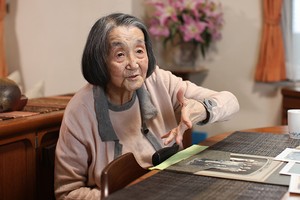THE ASAHI SHIMBUN
April 12, 2025 at 14:59 JST
 A worker cleans the home of a man in Osaka whose body was not found for a month after his death. (Asahi Shimbun file photo)
A worker cleans the home of a man in Osaka whose body was not found for a month after his death. (Asahi Shimbun file photo)
More than 20,000 people who died at home alone in Japan last year were not found until more than eight days after their demise.
This grim finding emerged from statistics on solitary deaths released by the National Police Agency on April 11.
Police around Japan handled a total of 204,184 deaths in 2024. Of that figure, about 40 percent, or 76,020 individuals, died alone at home. In the case of 21,856 individuals, their bodies were not discovered until more than eight days after they had passed. About 80 percent of those cases involved men.
Of those who died alone, about 80 percent, or 58,044, were senior citizens aged 65 or older.
Solitary deaths occurred in other age groups, too, including 62 aged 10 to 19 and 780 in their 20s.
Various public and private agencies have compiled statistics about solitary deaths in the past, but their methods and calculations differed. So, a panel was set up within the Cabinet Office to get a handle on the situation due to concerns that solitary deaths would keep rising with the increase in single-member households.
In 2023, the panel recommended that greater efforts be made to pin down an accurate annual figure for the number of solitary deaths.
Among the reasons given were the lack of dignity for the person whose body had begun to decompose by the time it was found; that such circumstances were not how the individuals in question would have wanted to be discovered, especially as many cases involved people who had become isolated from society due to economic difficulties; and because if there was no one willing to take on formalities for winding up the affairs of the deceased, it would create a greater financial burden for local governments handling issues ranging from inheritance to cleaning the home and funeral expenses.
Along with the April 11 release of figures by the NPA, the Cabinet Office panel issued its final report and suggested that “isolated deaths” be defined as those of individuals whose bodies were not discovered until at least eight days later. The eight-day figure is intended to show that the deceased person had become isolated from society at some point.
The NPA statistics showed that close to 40 percent of those who died alone were discovered either on the same day or the following day. About 70 percent of cases were discovered within a week of their death.
However, there were 6,945 cases where the person was not discovered until at least one month after their death and 253 cases where the bodies were not found for at least a year.,
Local governments have different ways of trying to prevent solitary deaths.
The Aizu-Wakamatsu city government in Fukushima Prefecture, for example, has signed agreements with various public utilities, as well as the local post office and newspaper agents. If mail piles up or there is no apparent use of the water supply, employees of the entities concerned will contact the city government or local police.
The Fukuoka city government on the main southern island of Kyushu set up a system in 2013 that allows delivery workers and neighbors to call around the clock if they notice something unusual. This means that a subcontracted nonprofit organization can send someone to check on the elderly resident. In fiscal 2023, there were 471 such calls, a 40 percent increase from nine years ago.
The Susami town government in Wakayama Prefecture in central Japan has turned to advanced technology to keep an eye on its senior citizens. For those aged 65 and older who live by themselves, as well as people with disabilities, a movement sensor is attached to the home phone. If no movement is detected in the morning or at night, a phone call is placed to the home from a call center.
If the call is not taken, contact is made with two neighbors chosen beforehand, as well as relatives if there are any. An emergency notification button is also installed. If the resident pushes it, an automatic call is made to the local ambulance service.
(This article was compiled from reports by Daichi Itakura, Koki Furuhata and Hisaki Tamanaha.)




















A peek through the music industry’s curtain at the producers who harnessed social media to help their idols go global.
A series based on diplomatic documents declassified by Japan’s Foreign Ministry
Here is a collection of first-hand accounts by “hibakusha” atomic bomb survivors.
Cooking experts, chefs and others involved in the field of food introduce their special recipes intertwined with their paths in life.
A series about Japanese-Americans and their memories of World War II